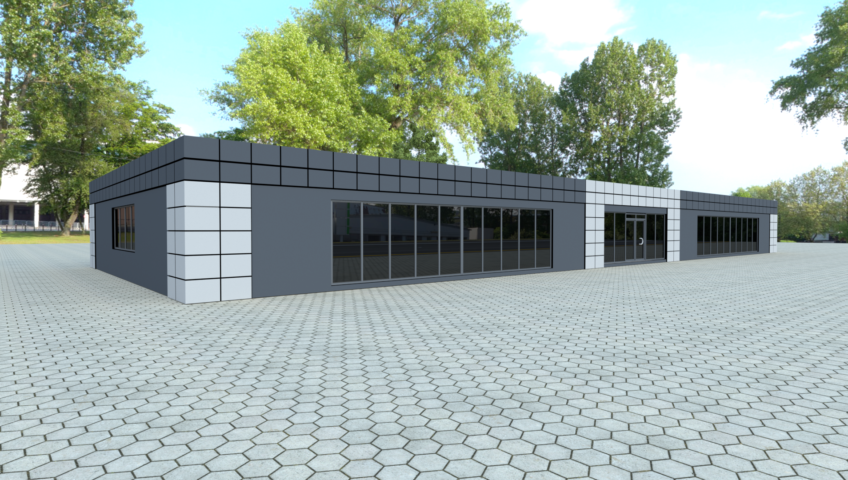
3D Printing Technology
Concerns regarding ecology and health are influencing progress within the construction industry. Currently, there are more engineering solutions in connection with green building resolutions than ever before. Structural design is adapted towards new technological alternatives. This means that new possibilities are opening up. One of those new possibilities is 3D printing technology. Technology which is worth our attention particularly because of its versatility. Recently developed and worked on continually 3D technology may eventually become our normality.
First, of the two examples, we would like to discuss in terms of 3D technology within building industry is a 3D printed residential house in Russia, created by Apis Cor. Nikita Chen-yun-tai, who is an engineer and Apis Cor founder, while working on 3D technology, has focused on creating 3D portable printer which can be transported to print a building on site. He believed it to be a better option in comparison to other efforts in 3D printing technology, which at the time were focusing on printing separate modules off-site and assembling them on site in order to create a whole structure of a building. 3D printed residential house in Russia was accomplished by printing the whole structure on site in just 24 hours and finishing off by adding roof and windows afterward. The type of material used for printing was concrete.
Within building industry, there are believers in 3D printing technology who think of it as a potential quicker, cheaper and environmentally friendly solution in comparison to traditional building methods. In our previous articles, when we discussed the history of prefabricated buildings, we talked about their use as a quick housing solution in particular. We discussed pre-fabs; post-war prefabricated houses which were erected in large numbers in the UK. Modular buildings were and still are the quicker and cheaper solution. As a modular building manufacturer we are excited to find out more about different quick resolutions within the building industry and for that reason, we find 3D printing an exciting technology to keep an eye on.
The second example of 3D printed building we will talk about today is Mediated Matter group project called Digital Construction Platform created and worked on by Steven Keating, Julian Leland, Levi Cai and group director Prof. Neri Oxman. Mediated Matter is a research group working across different sections of engineering technologies including synthetic biology, computer science, design and ecology in order to create different type and size of objects and structures with a potential to enhance relation of natural and man-made worlds.
Digital Construction Platform which they created is a mobile robotic arm fitted on a moving vehicle in order to be able to print a structure of a building in almost any size on site. Researchers decided to use insulation foam to print a test structure in the shape of a dome. The type of foam which have been used is similar to those used in traditional building methods in order to be filled with concrete afterward. Finished structure was 50 foot in diameter and 12 foot high. It was completed in less than 24 hours. Researchers of Mediated Matter hope to be able to use this type of 3D printing technology in the future in order to create astronauts accommodation during space missions or in Antarctica. Other options for use would be in areas following natural disasters such as after an earthquake or tsunami, as a quick shelter and accommodation. Materials used for printing could be different, for example naturally found within the environment. This could include mud and dirt. By doing so, an environmentally friendly structure would raise, naturally balanced with local surroundings, created by saving and recycling materials already present. This approach would be useful for both space missions and areas of natural disaster. Digital Construction Platform could be operated with the use of solar power, making it even greater in terms of positive ecologically friendly solutions.
We are looking forward towards new technologies in hope for more advanced, healthier and greener future building solutions and we are looking forward towards progress which 3D printing solutions are offering. When developed further, and it is an ongoing research, 3D printing technology may be in use for rehousing, office accommodation or immediate shelter following natural disasters. If you would like to find out more about 3D printing projects which we discussed within the article, including photos of the structures, please follow links in the sources section below. Featured photo within the article is of one of our modular building designs.
Sources:
apis core (2017), available at http://apis-cor.com/en/about/blog/features-and-perspectives-of-3d-printing (Accessed January 2018)
LiveScience (2017), available at https://www.livescience.com/58156-3d-printed-house-built-in-less-than-a-day.html (Accessed January 2018)
Mediated Matter (2018), available at http://matter.media.mit.edu/tools/details/digital-construction-platform-dcp (Accessed January 2018)
Science Daily (2017), available at https://www.sciencedaily.com/releases/2017/04/170426183028.htm (Accessed January 2018)

Write a Comment